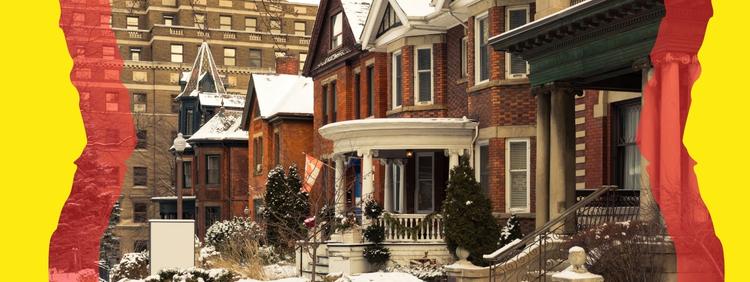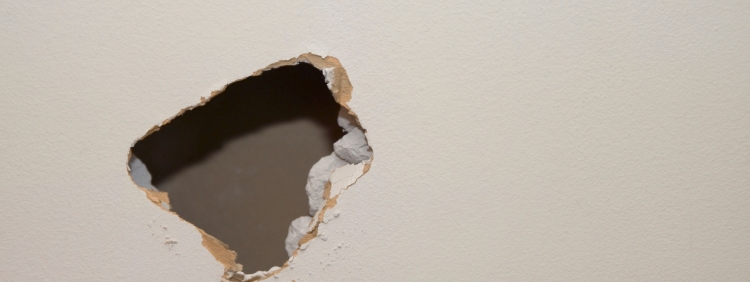 Hamilton is a city that has a large impressive collection of historic homes and is also a hotspot for rodent activity. The charm and character of these buildings come with a downside - they were not built to withstand modern-day pests. With rodent removal in Hamilton becoming a growing concern, homeowners need to consider effective pest control strategies to keep these invaders at bay.
So, we've put together some key strategies to help historic homeowners keep rats, mice and other rodents from entering and damaging their homes. From sealing entry points to implementing proper sanitation practices, our guide covers all the necessary steps to ensure your home remains rodent-free.
Hamilton is a city that has a large impressive collection of historic homes and is also a hotspot for rodent activity. The charm and character of these buildings come with a downside - they were not built to withstand modern-day pests. With rodent removal in Hamilton becoming a growing concern, homeowners need to consider effective pest control strategies to keep these invaders at bay.
So, we've put together some key strategies to help historic homeowners keep rats, mice and other rodents from entering and damaging their homes. From sealing entry points to implementing proper sanitation practices, our guide covers all the necessary steps to ensure your home remains rodent-free.
Understanding The Threat: Rodents In Historic Homes
Historic homes beautify Hamilton’s neighbourhoods with their unique architectural styles and provide a rich link to the historical past. But their charm and character often come with some unique challenges – one of them being rodent infestations. Unlike modern buildings, historic homes sometimes lack up-to-date pest control measures. Plus, their old and often deteriorating structure offers plenty of nesting places and easy entry points for rodents. These invaders not only pose a health threat to your family with potential diseases they can carry but also damage the structural integrity of your precious historic home.The problem with rodents
- Rats and mice can gnaw through many types of materials, including wood, soft concrete, and some types of plastic pipes. It's no wonder why they can easily cause significant damage to historic homes that are mostly made of wood.
- They can also ruin electrical wires, foundations, insulation, and even antique furnishings.
- They reproduce quickly. If left unchecked, a small rodent problem can rapidly escalate into a large-scale infestation.
Signs Of Rodent Infestation: What To Look For
Detecting a rodent infestation early can save you a great deal of trouble and potential damage to your historic home. Here's what you should be looking out for.Evidence of gnawing:
Rats and mice love to gnaw on various materials to keep their teeth sharp. You may spot signs of their little dental routine on wooden structures, or chew marks on wires, which carry a severe risk of fire.Noises:
During the quiet nighttime hours, listen keenly for the sound of scampering feet in the roof, ceiling, or walls. This could signify rodent activity in your home.Nests:
Rodents often make cozy homes in secluded areas of your house. These nests consist of shredded materials like paper, fabric, dry plant material and are typically found in undisturbed areas like attics, basements, closets, or behind furniture.Droppings:
One of the most obvious signs of a rodent infestation are droppings. These are usually small, dark, and pellet-like.Tracks or runways:
Tracks can be detected by spreading flour in the area of suspected activity. Rodents often have specific paths they travel along which can be identified with this simple trick! Keeping an eye out for these signs can help locate an infestation before it escalates.Step 1: Identifying Vulnerable Entry Points
 The first step to securing your historic home from rodents is to identify potential entry points - areas where they can gain access to your home. This step requires a meticulous inspection of your property.
The first step to securing your historic home from rodents is to identify potential entry points - areas where they can gain access to your home. This step requires a meticulous inspection of your property.
Inspect the exterior:
- Start by examining the foundation of your home for any cracks or holes. Even tiny gaps can offer an entryway for mice, rats and other rodents.
- Check for gaps around windows and doors. Rodents are experts at squeezing through minuscule spaces!
- Inspect the roof carefully. Make sure there are no missing tiles or damaged areas that might provide access.
Inspect the interior:
- Look for any signs of gnawing around doors, windows, utility lines, vents, and other areas. This could indicate an existing pathway that they are using to enter your home.
- Investigate hidden areas such as attics, basements and crawl spaces. These are often hotspots for rodent activity due to their secluded nature.
Step 2: Sealing Off Potential Nesting Areas
Once the potential entry points have been identified, the next course of action is sealing these areas to prevent rodents from entering your historic home. But bear in mind, these are old structures, so appropriate care and materials must be used to ensure that the integrity of the building isn't compromised.Exterior sealing:
- Areas of crumbling or cracked foundation must be repaired immediately. A professional contractor who specializes in historic homes can help ensure the repair is done correctly while preserving the home's heritage.
- Use high-quality, flexible sealants to close off gaps around doors and windows. Weatherstripping is another good option for doors.
- For larger gaps or holes, especially in the roof, professional help may be necessary. They can carry out repairs while maintaining the historic integrity of the home.
Interior sealing:
- Small holes inside your home can be sealed using caulk or foam insulation.
- For larger holes, consider using a more sturdy material like sheet metal or hardware cloth. These will resist the gnawing abilities of determined rodents.
Step 3: Implementing Effective Rodent Deterrence
Once you've sealed off entry points and potential nesting areas, it's time to take measures to actively deter rodents from your historic home. Remember, prevention is always better than cure, especially when dealing with potentially destructive rodents.Proper sanitation:
A key aspect of rodent deterrence is maintaining cleanliness and proper sanitation. Rodents are attracted by food and water, so minimizing their access to these essentials can go a long way in discouraging their presence.- Always store food, including pet food, in sealed containers. Avoid leaving food out overnight.
- Keep your kitchen clean. Clean up any food scraps or crumbs immediately.
- Regularly take out the trash and make sure trash bins are securely closed.
- Eliminate water sources. Rodents, like all living creatures, need water to survive. Check your property for leaking pipes, dripping taps, or pools of standing water.

